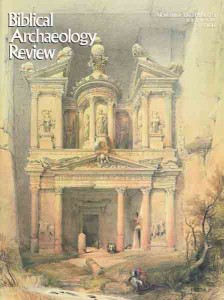
“A rose-red city, half as old as time”—so the Nabatean site of Petra was described by 19th-century poet John William Burgon. Not “half as old as time,” and perhaps not even a “city,” Petra, in modern Jordan, has received too much attention from archaeologists, says Avraham Negev in “Understanding the Nabateans.” Although a major religious center, Petra was not a dwelling place, nor was it of major economic importance, in Negev’s view, and overemphasis on it has detracted from the study of other Nabatean sites. Negev’s excavations in Israel’s Negev desert have greatly increased our knowledge of the Nabatean trade network and have uncovered the secrets of its success. The importance of this network can hardly be exaggerated, for it made the Nabateans the masters of the desert and provided the riches that enabled them to sculpt their extraordinary, monumental temples and tombs.
Negev’s work does not end with excavation, however. His study of inscriptions, including one discovered only recently, clarifies the linguistic and cultural affiliations of the Nabateans and gives us a glimpse of the Nabateans’ unusual way of using language.
Already a library member? Log in here.
Institution user? Log in with your IP address.

